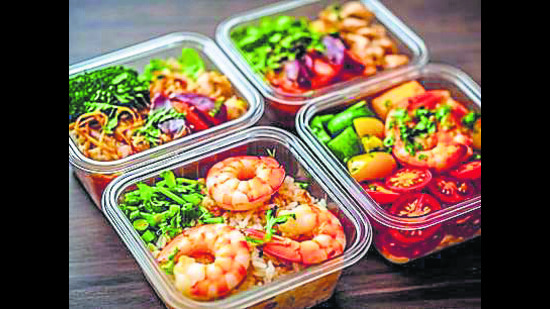Hertz all over: Swetha Sivakumar, on what goes on in a microwave oven
What exactly do these rays heat, and how? Why are eggs, meat and fish so tricky, but veggies and papad so easy to ace? See what happens after the beep.
Microwaves are waves of electrical and magnetic energy that oscillate together. Part of the electromagnetic spectrum, they were initially used for the transmission of TV and radar signals. NASA still uses them to communicate with satellites, because they can transmit even amid dust, cloud and rain.

The timer on microwaves and food was turned on in 1945, when Percy Spencer, a physicist with the American defence contractor Raytheon, was working with a magnetron tube (then used mainly in radar systems) and noticed that, merely from its proximity, it had melted a candy bar in his pocket.
He realised then that these waves had the potential for use in a cooking device. He filed a patent the same year.
Early models of the microwave oven were incredibly large, weighing as much as 340 kg and priced at about $5,000. They were used mainly on ships and in large restaurants. By 1970, with reductions in cost and size, the devices began appearing in home kitchens.
Microwaves are not among the ionising kinds of radiation (such as x-rays, gamma rays and ultraviolet rays) that can penetrate skin and cause internal damage. The waves themselves carry only about 1/10,000th the energy generated by heated coal. Still, these ovens manage to be one of the most efficient appliances in the kitchen.
This is because of the unique way in which microwaves interact with food. Well, not the food itself, but the water contained in most foods.

These electromagnetic waves transfer energy to polar molecules. Water is a prime example of a polar molecule. One end of each molecule has a positive charge, from the hydrogen atoms’ electrons; and the other, a negative charge from the oxygen.
Microwaves toggle this polarity at speeds as high as two to five billion times a second. (That’s simply how fast electromagnetic waves, including radio and light, oscillate, which is why we use megahertz and gigahertz as units. 1GHz is a billion cycles per second. A typical microwave oven operates at 2.45 GHz).
The constant switching causes the water molecules to oscillate, causing friction, and heat. It’s as simple as that.
This reaction doesn’t occur effectively in non-polar molecules, which is why the air surrounding the food in these ovens is always cool. One cannot make an effective jeera-rai tadka in a microwave oven either, for this reason. But add garlic or onion and the water in these ingredients will eventually heat the surrounding oil. (Just don’t add chilli powder, or you’ll have a spicy red cloud in your face when you open the door.)
Temperature cannot be controlled exactly, because the microwaves are not hot themselves. As a result, eggs, fish and meat can end up overcooked. And fried foods heat up very quickly because the oscillations caused by the few water molecules are retained by the surrounding fats.
Because of the fixed wavelength, the effect of the waves doesn’t always travel uniformly to all parts of the food. This is why some parts of a dish may remain cooler, or cold. It helps to remember that, as with lightbulbs, higher wattage equals greater intensity. Ovens with a lower wattage are less expensive, but also less effective.
So, what is the ideal thing to cook in a microwave oven? Vegetables, because they contain water and durable fibre, tend to turn out well. Finish off the veggies with a quick roast on the stovetop for a healthy and delicious dish.
One can also dry out water-heavy dishes effectively by heating them in a microwave oven, in an open dish or plate. Almost any food can be reheated; just sprinkle a little water, and the reaction begins.
My favourite hack is papad. Toss it in a microwave oven and it’s done in a minute, with no oil and no mess. Each wafer contains just enough moisture for the starches within to cook in that time; and with that moisture gone, the end result is a papad with a good crunch.
Admittedly, the uneven cooking can be an issue. But on a weeknight when no one has the energy to deal with a kadai and oil, it can feel like a blessing indeed.
(To reach Swetha Sivakumar with questions or feedback, email upgrademyfood@gmail.com)








